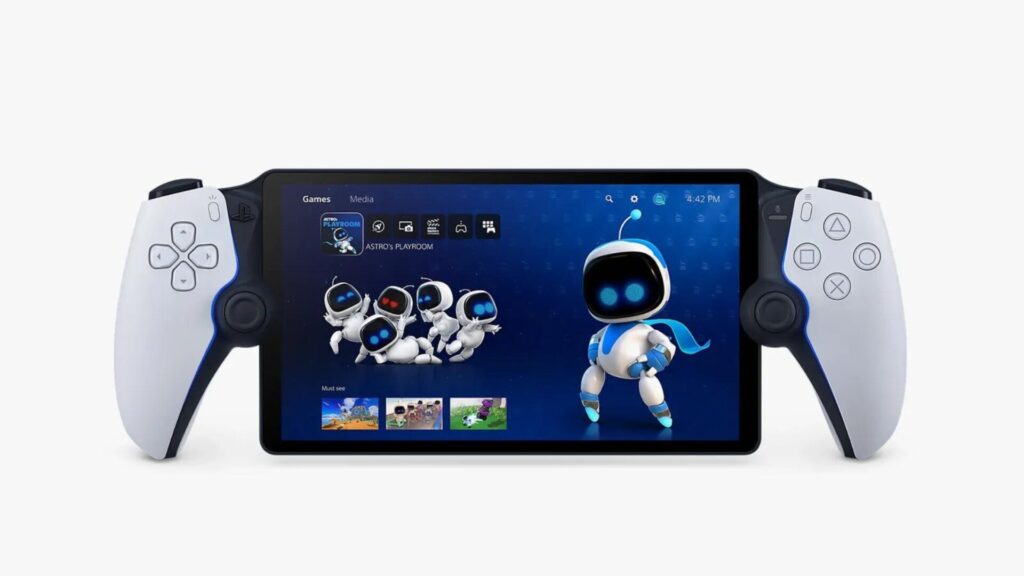Sony has once again ventured into the handheld gaming arena with the Sony PlayStation Portal, offering a unique approach to portable gaming. Priced at $200, this device aims to provide an affordable means of playing your beloved PS5 games on the go. In this comprehensive review, we’ll explore the Portal’s features, functionality, and whether it stands as a viable option in the evolving landscape of handheld gaming.
The Curious Case of Sony’s Handheld Ventures: Sony’s handheld gaming journey has been marked by intriguing choices, from the moderate success of the PlayStation Portable to the underappreciated PlayStation Vita. With the emergence of the Nintendo Switch, the handheld gaming market experienced a renaissance, sparking hope for a Sony counterpart. Enter the PlayStation Portal, Sony’s latest foray into handheld gaming, promising a distinct gaming experience for PS5 enthusiasts.
Functionality and Streaming Dynamics: Unlike traditional handhelds, the PlayStation Portal takes a unique approach by streaming games directly from your PS5. Priced attractively at $200, it positions itself as a cost-effective alternative, provided you already own a PS5 console. However, the catch is that the streaming capability is contingent on a robust internet connection, either through home Wi-Fi or the internet.
The Portal mirrors your PS5 interface, essentially acting as a remote desktop app for your console. This unique streaming method allows gaming enthusiasts to enjoy their favorite titles on the Portal, whether lounging in bed or sharing the living room with others. However, it comes with the caveat that the game displayed on the Portal is fully mirrored, restricting independent activities like watching TV or accessing media apps.
Controller Design and Gameplay Experience: One of the standout features of the PlayStation Portal is its controller design, echoing the familiar feel of the DualSense controller split by an 8-inch LCD screen. This design choice ensures that games played on the Portal seamlessly align with the intended controller configurations, eliminating the need for button remapping or awkward adaptations found in other gaming handhelds.
Despite this harmonious integration, there’s a minor exception with the touchpad. While the Portal replicates the touchpad features, such as tapping and swiping, the execution may feel awkward for some users. Games heavily reliant on touchpad gestures may present challenges, as evidenced by a glitch in Alan Wake II. However, considering the overall smooth gameplay experience, such inconveniences remain minor.
Display Quality and Battery Life: The Portal boasts an 8-inch LCD screen with impressive visuals, supporting up to 1080p Full HD video at 60 frames per second. This ensures a visually appealing gaming experience, striking a balance between quality and bandwidth requirements. The absence of Bluetooth support for headphones is notable, but users can connect headphones via a 3.5-mm jack or PlayStation Link-enabled headphones.
Battery life emerges as a strong suit, offering around eight hours of playtime on a full charge. Notably, the Portal’s battery performance remains consistent regardless of the game being played, presenting an advantage over competing handhelds where battery life can fluctuate based on game intensity.
Streaming Challenges and Bandwidth Requirements: While the PlayStation Portal excels in various aspects, its reliance on streaming introduces challenges tied to bandwidth requirements. Sony recommends a minimum of 5 Mbps, with a preference for 15 Mbps, though real-world usage may necessitate higher speeds, especially for action-packed games with rapid movements.

The Portal supports Wi-Fi 5, excluding Wi-Fi 6E or Wi-Fi 6, a decision that may disappoint users seeking the latest wireless technology. Despite this limitation, the Portal demonstrates commendable stability in streaming, overcoming inherent Wi-Fi inconsistencies to deliver a reliable gaming experience.
Alternative Streaming Options: One noteworthy aspect is the existence of Sony’s PS Remote Play app, offering a free alternative for streaming PS5 games. This app allows users to leverage existing devices like laptops, tablets, or phones for remote gaming. While the Portal offers added convenience with remote PS5 activation, the app remains a viable choice for those seeking a cost-effective streaming solution.
Conclusion: In wrapping up our exploration of the Sony PlayStation Portal, we find a device that caters to a specific niche within the gaming community. Priced affordably at $200, it offers PS5 enthusiasts a chance to extend their gaming experiences beyond the confines of the living room. The seamless integration of the DualSense controller, coupled with a vibrant LCD screen, ensures an enjoyable gaming session.
However, the streaming-centric approach introduces dependencies on internet stability, potentially limiting the Portal’s accessibility for users with suboptimal connections. While the Portal presents a compelling option for in-home gaming away from the TV, its value proposition diminishes when compared to free alternatives like the PS Remote Play app.
As Sony continues to navigate the evolving landscape of handheld gaming, the PlayStation Portal stands as a testament to innovation and adaptability. Whether it finds a place in the hearts of gamers ultimately depends on individual preferences and the importance placed on a dedicated handheld gaming device. As we bid adieu to traditional handhelds and welcome streaming-centric alternatives, the PlayStation Portal carves its niche, offering a glimpse into the future of portable gaming.

